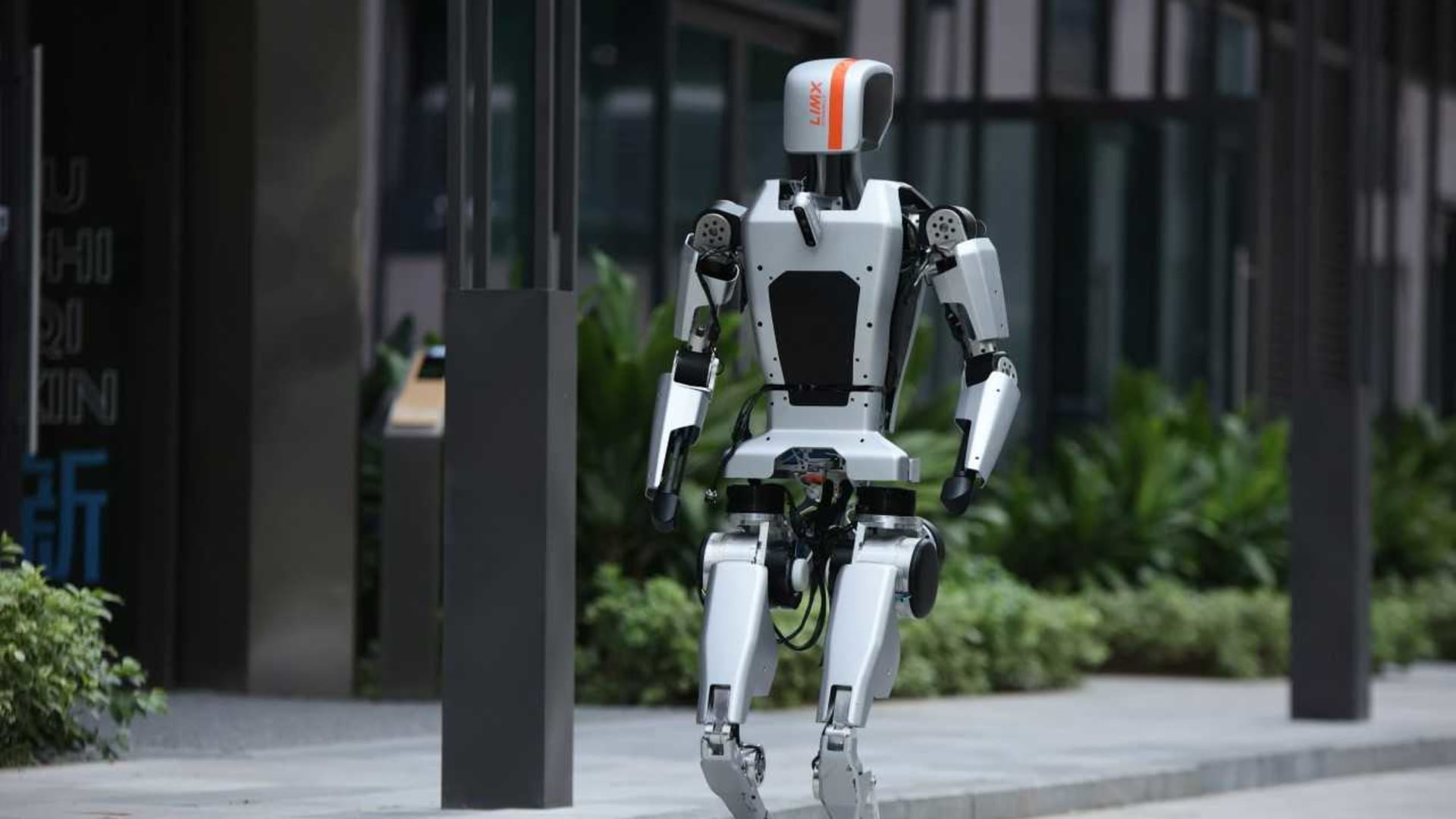

Shenzhen-based LimX Dynamics shows off one of its humanoid robots.
Limx Dynamics
BEIJING — ChatGPT-like artificial intelligence is speeding up research and bringing humanoid robots closer to reality in China, home to many of the world’s factories.
AI has been around for decades. What’s changed with the emergence of OpenAI’s ChatGPT chatbot is the ability of AI to better understand and generate content in a human-like way. While the U.S.-based tech is not officially available in China, local companies such as , while Elon Musk’s Tesla is developing its own, called Optimus.
Electric car giant BYD last year invested in Shanghai-based Agibot just months after its founding, according to PitchBook.
And at a high level, Chinese state media in November published a photo of Chinese President Xi Jinping watching a humanoid robot at an exhibition center during his first trip to Shanghai since the pandemic. The robot was developed by Fourier Intelligence.
Before humanoid robots reach households, as LimX ultimately intends, factories can be a lucrative, enclosed scenario in which to deploy them.
China surpassed Japan in 2013 as the world’s largest installer of industrial robots, and now accounts for more than 50% of the global total, according to Stanford’s latest AI Index report.
Electronics, automotive and metal and machinery were the three leading sectors for industrial robot installation in China, the report said.
Impact on human jobs
When it comes fully replacing human workers, however, AI advancements alone aren’t enough.
Even if AI allows a robot to think and make decisions on par with humans, mechanical limitations are a major reason why humanoids can’t yet replace human laborers, LimX’s Li said.
One of LimX’s backers, Future Capital, has also invested in a company called Pan Motor that specializes in motors for humanoids.
Generative AI doesn’t directly help with robotic motion, pointed out Eric Xia, partner at Future Capital, an investor in LimX. But “advances in large language models can help humanoid robots with advanced task planning,” he said in Chinese, translated by CNBC.
LimX’s other investors include Lenovo Capital.
A shift toward factory robots can accelerate, once the cost-per-robot comes down.
Steve Hoffman, chairman of a startup accelerator called Founders Space, said he is working with a Chinese startup called Fastra, which he expects can begin mass robot production in one year. He said he spent time in China this year teaching local businesses how to integrate generative AI.
“We have already received six orders from research institutions,” he said, noting the startup aims to lower the cost per robot to between $50,000 to $100,000 by rollout.
“If we can hit a $50,000 price point, we can sell a lot of robots,” he said, pointing out the robots’ batteries can be charged as they work, 24 hours a day. “Could pay for the robot in a year.”
In pharmaceutical research, generative AI can reduce costs, without cutting into human labor.
“You don’t save costs in our business by having less people. You actually save costs by making fewer experiments that fail,” said Alex Zhavoronkov, chairman of the board, executive director and CEO of Insilico Medicine, which has offices in Hong Kong, New York and other parts of the world.
He noted how large pharmaceutical companies have typically had to spend thousands of dollars to replicate a molecule for testing — and would run a few thousand such tests per program. He claimed that with the help of AI, Insilico only needs to synthesize about 70 molecules per program.
The company published a paper in Nature in March claiming to have reached phase 2 clinical trials for an AI-generated drug.






